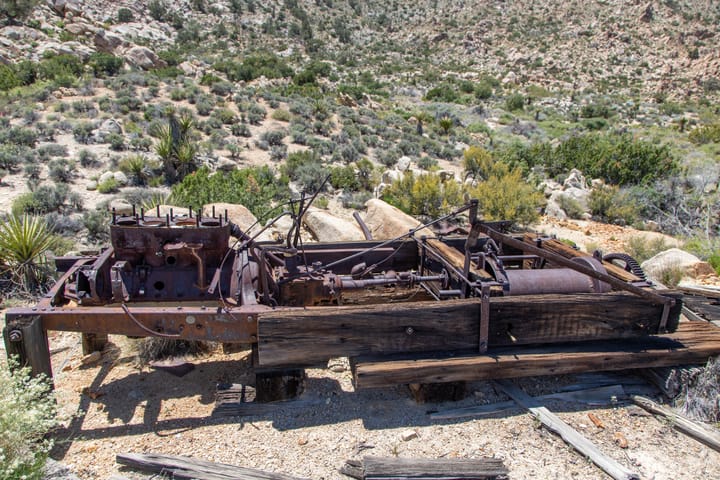In 2022, while brainstorming for our annual Turkey Day Vacay, I recalled a saguaro that I’d seen in Vidal Valley and wondered if it was still there. The problem was that I’d never been to Vidal Valley, so I couldn’t possibly have seen the cactus in question. Such is the evocative power of Desert Magazine…
Satisfied that I’d imagined it, I retraced my research for our 2013 Spring Fling, when I must’ve seen the saguaro in another context. I consulted the index and asked Guy for several issues before finding a photo of it, towering over a full-grown man, on page 16 of the November 1944 issue…
In the article, “We Found the Arch—but not the Nuggets” by Walter Ford, the saguaro is mapped as a landmark for a lost arch and a gem field. It was over 25 ft high 78 years ago, so if I find the arch, I'll find the cactus…if it still stands. A saguaro can live for over 200 years, and I needed an excuse…
Read next

Goldstar and Pinyon Pine Mine Cabins

Lady Jeanne Mine

The Blueprint Petroglyph
The desert has gone silent. Where once it was inhabited by homesteaders, miners, and even ranchers, now it's a checkerboard of wilderness areas delineated by long, lonely roads. Surely many interesting and historic sites remain, but how accessible are they now that most of the roads have been
